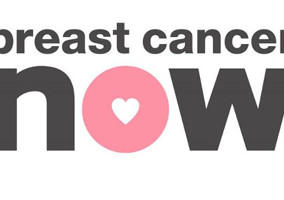This month we’ve seen two big bits of research which report that giving is down. First the Charities Aid Foundation published the UK Giving report, which found that the percentage of people who give money to charity directly or through sponsorship fell from 69 per cent in 2016 to 65 per cent in 2018.
This was swiftly followed by the Sunday Times, which published its latest Giving List as part of its annual Rich List analysis of the UK’s wealthiest people.
As per usual it shows that some people who have an eye-watering amount of money have also donated substantial sums to causes they care about. However, while the total figure has grown again, this appears to have been driven by a cohort of those at the very top, with a sharp decline in the overall number giving 1 per cent of their wealth to charity.
Indeed, in 2015, 105 on the list gave more than 1 per cent to charity, but the figure had fallen to 86 last year and now stands at just 72 this year.
It has not all been doom and gloom. Evidence from the Community Life Survey, conducted for the government, suggests that people’s giving has been relatively stable over the last few years, while data from NCVO’s Civil Society Almanac suggests that giving tends to dip slightly when the economy is struggling, but bounces back as the economy recovers.
But, these latest two reports, published so close together, beg the question of whether there a wider crisis in giving.
Why is this happening?
An easy response to the apparent decline in giving is to link it to declining public trust following the various high-profile charity scandals of the past few years.
Indeed much of the commentary surrounding the UK Giving report drew this conclusion, partly because the accompanying press release itself led journalists in that direction.
But there are almost certainly other factors at play. Brexit, and the economic and political uncertainty that surrounds it, touches on almost all aspects of life.
While it may not be a conscious decision, most households will be making spending decisions with the shadow of uncertainty about jobs and house prices looming over them. And concerns have already been voiced that some major donors have been holding back because of Brexit.
It’s worth unpicking the numbers further to understand what we mean when we say that giving has fallen. Donating money to charity has fallen from 61 per cent of people in 2016 to 57 per cent. But sponsoring someone for money has seen a steeper drop, from 37 per cent to 32 per cent over the same period.
Could it be that levels of crowdfunding by individuals using online giving platforms, such as GoFundMe and JustGiving, are having an impact here? Or are fewer people are getting involved with mass participation events?
There’s some evidence for the latter. An annual assessment of the largest 25 charity events, carried out by the agency Massive, found that their combined fundraising total fell last year. Keeping these events relevant is an ongoing challenge, and Cancer Research UK this year announced a “revamp” of its flagship Race for Life event, opening up participation to men for the first time.
Indeed the CAF report says the fall in sponsorship income is partly down to less support for health causes than in previous years.
It says: “In general, sponsorship for health-related causes is much lower than in 2017, with the proportion sponsoring someone for hospitals and hospices falling (19 per cent vs 24 per cent in 2017) and for physical and mental health care from 21 per cent in 2017 to 13 per cent in 2018.”
Asking is changing
Fundraisers will often tell you that if you don’t ask you don’t get. And last year fewer people were asked.
CAF’s study found that fewer people said they have been approached for donations, particularly through direct mail, with 23 per cent saying they had been sent fundraising letters in 2018 compared to 28 per cent in 2016.
This is widely assumed to be as a consequence of the fundraising scandals from 2015. They exposed a range of poor practices and attitudes in the profession, and led to the creation of a new regulator, the demise of some of the key fundraising agencies and a general overhaul of how charities fundraise.
The introduction of the European Union’s General Data Protection Regulation directive last May also forced many charities to update their contact lists, with some asking previous contacts to opt-in to receive communications.
For many fundraising teams this has been a period of review and reflection as they ensure that they are compliant with new rules and think about the best way to continue to communicate with new and existing supporters.
Daniel Fluskey, director of policy at the Institute of Fundraising, wrote the following for Civil Society News recently: “Charities have really stepped up in thinking about how they get a better, more engaged, more loyal relationship with current supporters in a way that I think is different from before.
“This is undoubtedly positive and may explain why the people that do donate are giving more if they are getting a great and improved experience from charities they support. But has it come at the cost of doing less outreach and activity to find new supporters?”
I suspect that the nation’s wealthiest donors are no exception and are also being asked with less frequency, although this won’t have been captured the Sunday Times’ research.
It is also worth noting that the ICO’s investigation into charities' data processing emphasised the importance of carrying out wealth screening transparently. At the time fundraisers worried that this would make it harder to research and approach potential major donors.
Changing attitudes
Both pieces of research rely on how people say they behave. Given the criticism that some philanthropists faced for pledging funding to Notre Dame but not the Grenfell fire, I wouldn’t be surprised if some wealthy donors were more reticent to shout about their contributions.
Similarly, the CAF survey is based on what people say they do, not what they actually do. If we accept that trust in the broad concept of charity has fallen, then it is also possible that in previous surveys people were more likely to lie and say they had donated because they thought they should say so. It feels to me that scandals in recent years have made it more social acceptable for people to say that they hate charities.
In recent weeks we have seen two examples of people challenging the motivations of charities.
Comic Relief found itself caught up in another “white saviour” row after Stacey Dooley posted a photo on Instagram of herself with an African child while she was making a documentary for the charity.
And more recently a Breast Cancer Now campaign was accused of being “ill-informed” and “rude” by patients who objected to the way they were portrayed in a photoshoot about friendship.
Women were so annoyed that they have formed a group and spoken out in the national media. To its credit the charity withdrew the video from its social media and issued an apology.
What has stayed the same?
Not everything has changed. In fact CAF’s UK Giving survey actually tells us that very little has changed radically when it comes to who gives and how. It’s more a story of gradual evolution.
Established trends such as women giving more than men, and older people giving more than younger people, continue to hold true.
Seasonal trends are largely unchanged, with more being donated during November and December. And some types of giving have remained stable; for example, over the past three years the percentage of people donating goods to charity has remained at 56 per cent.
Move with the times
It’s more important than ever that charities don’t become stuck in their ways. This means being aware of changing attitudes and new technologies and adapting accordingly.
Charities should take note of what looks like a steady drop off in cash donations and look at alternatives, such as ways for people to give via contactless cards or apps.
CAF’s reasoning for the low level of contactless donations is because “terminals are yet to be used widely by charities”.
Fundraising isn’t in crisis just yet, but there are plenty of signs that things are changing. Some of these changes are for the better, some for the worse, and some are just changes.
Related articles












